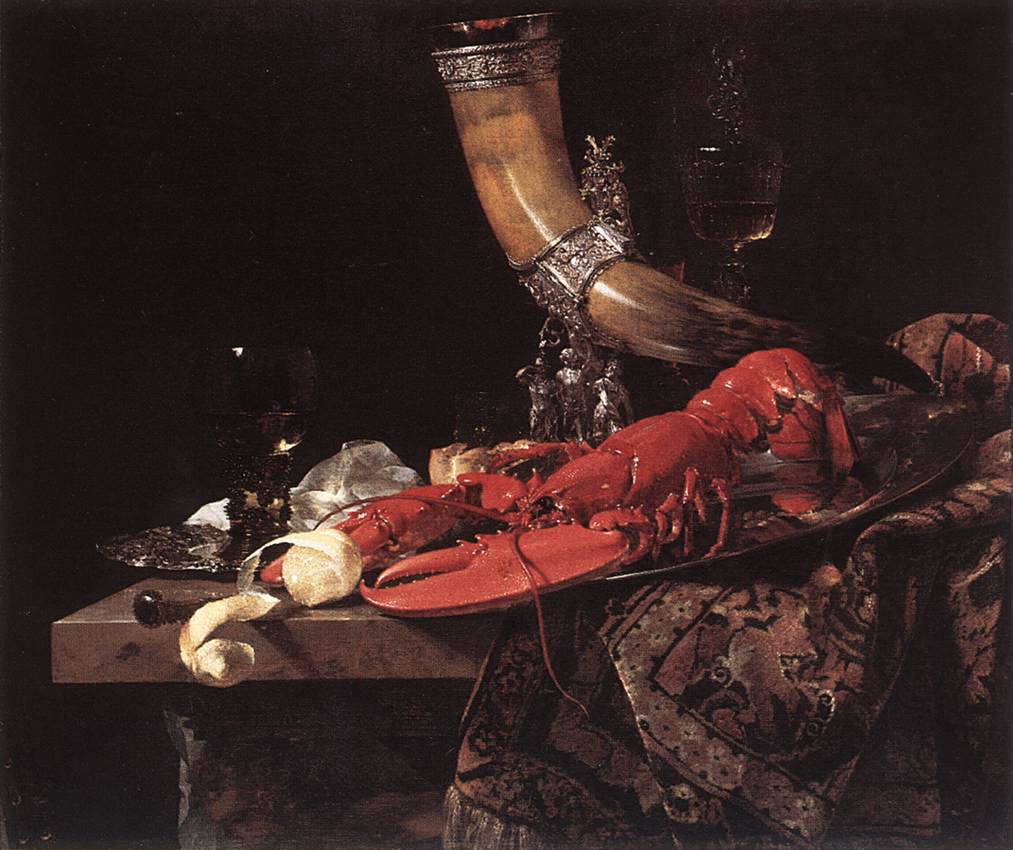
Historical
Oriental Rugs & Carpets
in Medieval European Paintings
Main Page
|
|
c. 1653
Oil on canvas, 86 x 102 cm
National Gallery, London
by Willem Kalf (b. 1622,
Rotterdam, d. 1693, Amsterdam)

Exceptionally for a still-life
specialist, the Rotterdam-born Kalf was praised by an Amsterdam poet as one of
the city's leading painters. Perhaps the praise would not have been forthcoming
had he persevered in his first interest: shabby peasant barn interiors and
still-lifes of humble kitchen implements, painted during his stay in Paris from
about 1640 to 1646. After his arrival in Amsterdam, however, following his
marriage to a cultivated young woman of good family, Kalf began to paint the
type of still-life for which he is best known.
Called in Dutch pronkstilleven ('still-lifes of display or ostentation'), these
compositions, influenced by Flemish antecedents, feature luxury manufactured
goods - silverware, Chinese porcelain, Oriental carpets, fragile glass - and
exotic foodstuffs. They do not seem to have specific symbolic meaning but must
have spoken to contemporary viewers of the wealth of the Dutch Republic, the
might of its sea power and the efficiency of its distribution systems - for all
this is implied in the eastern table carpet and in the fresh Italian lemon
unwinding its peel in the foreground.
The buffalo-horn in a silver mount belonged to the Saint Sebastian Archers'
Guild, part of the city's civic guard. Dated 1565, this beautiful example of the
silversmith's art, now in the Historisch Museum in Amsterdam, also testifies to
the old Netherlandish tradition of municipal freedom, and the will of Dutch
burghers to defend it. Kalf was to paint it more than once; it also appears in
pictures by other artists.
Ultimately, however, none of these associations is responsible for the grave
monumental beauty of Kalf's painting. As in all his mature works, only a few
objects are displayed and soberly arranged, in contrast with the luxuriant
profusion of Flemish still-lifes. Against a dark background, succulent paint,
broadly applied, models large forms and captures the very feel of surface
textures. Strong accents of the richest and brightest colours surge to the
surface - the huge scarlet lobster, the clear yellow and white lemon, touched
with pink where it reflects the lobster. And it is the play of reflections and
tinted shadows of these powerful hues which, like a musical motif, draws the
composition together.